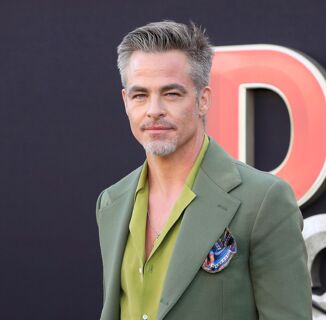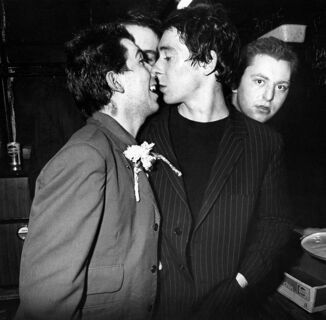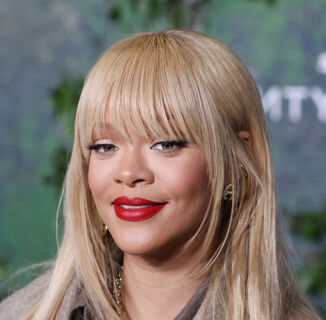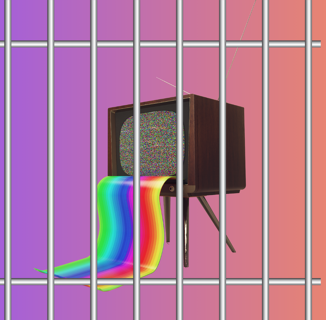Born in 1930 in Havana, Cuba, Maria Irene Fornes has written more than 40 works for the stage, won nine Obie Awards, and was nominated for the Pulitzer Prize in 1990 for her play What of the Night? Also known to the public for her affair with Susan Sontag, Fornes’ tremendously influential work as an experimental playwright in the Off-Off-Broadway scene has recently come into broader awareness through Michelle Memran’s debut documentary film, The Rest I Make Up, which screened at MoMA last month in conjunction with a marathon of Fornes’ work at The Public.

How did you meet Irene?
[In college,] I was a journalism major, but I secretly wanted to be a playwright. And I took a playwriting class, and we read [The Conduct of Life]. And I’d never heard of her, but the play floored me and I just didn’t know that that kind of writing existed. And so she was always somewhere in the back of my mind.
And I looked up her other plays that were published and read her work, and then, later, I started writing about theater and doing that — not doing reviews, but doing more personality profiles. And a mentor of mine in college was Jules Feiffer. He was also a playwright and a cartoonist. So I started writing about playwrights and directors, and I was doing an article for American Theatre about how playwrights over time had retaliated against critics. And so it was an exhaustive piece that took me a couple of years to do, but I interviewed all these playwrights. And I really wanted to interview Irene, and I was terrified of interviewing Irene, but she was listed in the phone book.
And so I just called her up and she picked up the phone. And she said, “Sure. Why don’t we go have coffee?” near her apartment. So that’s how I met her. And we met up on the corner of Waverly and Sixth Avenue, which is in the film. And we went to Baluchi’s Indian restaurant and sat there for about five or six hours. And she really didn’t answer any of my questions about critics, because she really couldn’t have cared less about what critics thought of her work. But we just became friends. It was just one of those moments of real kinship. And that was it.
And what inspired you to start documenting your time with her on film?
So, over the span of a couple of years that we were just friends, I noticed that she was home a lot. She wasn’t necessarily traveling so much. I mean, this is a woman who was always working and so industrious and always onto the next project, traveling around the world, teaching workshops… And all of a sudden, she was just home all the time. She was talking a lot about how she wasn’t writing, why she wasn’t writing, why weren’t people calling her to go teach?
And so I reached out to her agent at the time, Morgan Jenness, and I just said, “I’m a friend of Irene’s, and I noticed that she hasn’t been working very much, and also, she’s been forgetting some things.” And also, my first time going into her apartment, something seemed a little off. She’d always been a collector of books and a collector of photographs and found objects that she would use in her plays. But there was also some mold in the fridge… there were little signs that led me to call her agent. And Morgan said, “I think that she might have some memory loss. And we’ve been trying to rally the community around getting her to a doctor and making sure there’s food in the fridge,” and all that stuff.
So that was when I started coming by more frequently and bringing food and just hanging out and making sure the stove knobs were taken off… just little things that I thought, at the time, would help. And also, I loved hanging out with her, so it wasn’t like I was doing a great service.
And then, one day, we just went to Brighton Beach, and it’s in the film, and I had this Hi8 camera that my dad had gotten me, and we were just documenting this day on the beach. I had taken [the camera] out maybe once before. So we were just playing around with the camera. And then, I asked her if she was uncomfortable being in front of the camera, and then she has this fantastic response, which is, “The camera to me is my beloved, and I give everything I have to a camera.”
And so that was a eureka moment, I think, for both of us — definitely for me, and later for Irene — that this could be a way for us to collaborate on a creative project together, because it felt like she was writing for the camera, it felt like she was performing for the camera, and it was really fun for both of us to be engaged in that way. And so when I called Morgan back again, and I said, “Morgan, we just went out to Brighton Beach with a camera, and it was just really extraordinary — Irene’s response to being filmed — and what would you think if we did some kind of a film project together?” Morgan was like, “Oh my God! Definitely. Go for it.” So I borrowed a better camera.
It wasn’t like we had some outline, or we sat down and did formal interviews. It was basically, like, me coming over, bringing food and the camera, and the camera would often be on the floor or [chuckles] on a book propped on a bookshelf, Irene’s wireless mic would be falling off of her, we would be laughing and trying to make this thing work, which… we just didn’t know what we were doing, and that was that was the whole point of it, was that we were exploring this new medium together.

You mention in the film — particularly when you’re when you’re in Miami, Irene talks about wanting to come back to New York, and you say that there is no community in New York. What was that like for you: this moment where you realize that, in taking care of and documenting Irene’s life, you see that she isn’t getting the support from the arts community that she really needed?
I think that moment was particularly challenging and difficult, that moment on the street in Miami. I mean, it was one of the few moments in the film where we really kind of go head-to-head. Part of the reason why it took me so long [to finish the film] was reconciling the fact that here is this woman who’s done so much for the theater, so much for her students, was constantly surrounded by people. And then, the second that she’s no longer working in the theater, or of value in some way, the reception changes. And I think it did.
I think that the community, in particular around Alzheimer’s… I don’t think this is specific to Irene. I think this is very specific to the disease itself. I think people are afraid of it, and I think people don’t want to be around it, and everyone’s affected by it. Everyone has Alzheimer’s or dementia in their family these days. But it was really hard to understand why people weren’t showing up, and why certain members of her family weren’t showing up, why some of her friends weren’t showing up.
There were people that were there constantly throughout, but I think the theater community that she knew, that she was a part of, she was no longer a part of that community because she simply wasn’t creating anymore.
And there’s also the fact that she’s going further and further back into her early memories, so she was thinking a lot about Off-Off-Broadway and thinking a lot about Cuba. I think that, definitely, the Off-Off-Broadway community is no longer, in that same way: the community that she remembered of putting up plays in storefronts and sitting around and reading Edna St. Vincent Millay and talking about Gertrude Stein and sitting in cafés. That community was long gone before she started losing her memory.
How did you cultivate such a close relationship with Irene, when the age difference between you was so large?
With Irene it was interesting, because at the time when I met her, also, I was just coming out of the closet, and not really having the support of my family at the time. So when I became friends with Irene, it was not just becoming friends with my favorite playwright and having this mentor, but it was also having sort of a lesbian mentor, in a way, [chuckles] because… depending on the day, around her sexuality, she labeled herself various different things. But she became my family.
I was going on Nerve dates and going back to Irene’s and reading her the descriptions of the people I was going on dates with, and she would critique them, and she would tell me, “No, I don’t think that was a good one. I think this one’s a good one.” I mean, this is a woman who had had numerous affairs throughout her life, including with Susan Sontag and all these various literary figures. I turned to her for advice each step of the way as I was coming out, so I think it was a different experience for me because I really found family with her.
And I think that it is that thing of creating your own family. I think it made a huge difference that I wasn’t a relative, that I was an outside person who came into her life, because I didn’t have a history, I didn’t know her when she was actually making work. So I didn’t have the sense of loss that other people might come to visit her with. I was just completely captivated with who she was then.
And so the focus in the film is more on what remains than what is lost because that’s my experience of spending time with her. But yeah, I do think it’s rare to have that kind of… I was 25 and she was 70, so it was rare that we came together in this way. But I think there was always something underlying the friendship. It was like a mentor-student kind of relationship, too.
In the film, Irene says, “If you expose everything about you, the good the medium and the bad, you are a better person, a healthier person.” How do you relate to Irene’s conception of privacy?
Well, I mean, I particularly relate to it now. At the time, I looked at it through the lens of… I mean, obviously she’s talking about her own situation, and that’s just always the way she lived her life in terms of her work. But not necessarily her sexuality—it was just a part of her. There’s a part of the film where she talks about how her life is her life and she doesn’t need to explain it to anybody. But also, when she would talk about privacy, that really hit home for me as somebody who was just coming out of the closet.
And now, for the past year, I’ve been going through cancer treatment and watching the film. The week that the film got into MoMA, I found out I had breast cancer, so I’ve been watching the film for the past year and listened to her talk about privacy and not being afraid to tell your truth, basically. And that has really hit home to me as I’ve been going through this.
So I think, at various points of my life, it means different things to me. But I think that throughout the film, the way Irene deals or doesn’t deal with the fact that she has dementia: I think it’s really valuable for anyone, at any stage, to just own who they are and to not be afraid to express that. To not be afraid to tell somebody that you’re gay, or not be afraid to tell somebody that you happen to be bald because you have cancer.
People often ask me about specific moments during our collaboration when Irene was being Irene despite having dementia. And for me, that’s what the whole film is about: Irene being Irene despite having dementia. Her improvising a song on the street in the West Village. Her telling me how she doesn’t trust professionals. Her teaching me how to be an artist, encouraging me to keep writing. Her recalling the heydays of Off-Off-Broadway. Her dancing on the streets and beaches of Havana. Her talking about the creativity of her family in Cuba. Her curiosity and frankness about her own forgetting. Every exchange in the film, at least for me, represented a different aspect of Irene’s personality and showed her remarkable ability to articulate and inhabit a moment even as it was escaping her.

I feel that in this moment, social media — and the way they isolate us physically from each other — present new challenges for sustaining intergenerational dialogues in the queer community, and I wonder if you have something to say about what we lose when voices like Irene’s fall into obscurity, and what we can do to mend the breach.
With the aging of baby boomers, we’re living through an unprecedented moment in the makeup of our country. This year the U.S. Census Bureau predicted that by 2030 the number of older people are projected to outnumber children in the U.S. So I imagine we’re going to be seeing a lot more intergenerational collaborations in the future, which is incredibly exciting. We have so much to learn, about history, about humanity, about creativity, from our elders, and I hope that this film offers a window into the kind of rich, reciprocal exchange that can happen. I’ve never felt so seen by anyone in my life as I did by Irene. She gave me a great gift.
I think that, for me, there’s so many people who are living in isolation and are also just living in exhaustion and living without stimulus, who’ve had these incredible lives. And I do feel like helping facilitate the telling of story is… in any form, whether you’re coming in with a camera, or you’re just coming in with conversation, just in the nursing home, everyone is just sitting. And sitting and sitting and sitting. And it’s only going to get worse over time, in terms of the numbers and the overcrowding of nursing homes and the population boom and the increase in dementia.
And with the queer community, I mean, you have people who don’t have children, who don’t have conventional families, who are certainly like Irene, who didn’t have kids, who didn’t have a partner at the time. It just so happened that we came together, but what would have happened had that not happened? Would she have gone to a nursing home sooner? Would no one know anything about these past 15 years of her life? So I think that this is a big issue right now, and it has been for years.
But I think that programs that bring queer youth together with queer elders… SAGE does a little bit of that, is doing more of that. Those kind of mentorships or collaborations or just friendships that can start are going to be vital. Are so vital already. How do you make it happen, and consistently happen, when it’s not around necessarily a project? It’s a big question.
My partner and I also think about this a lot in terms of, you know, we don’t have children, we’re probably not going to have children. We go visit Irene and we’re at a nursing home and we think like, “So, who’s going to take care of us when we’re 88 and maybe can’t take care of each other?” We are setting ourselves up for unconventional lifestyles. How do you age in New York City having an unconventional lifestyle and a different kind of community? I guess we’ll find out.
The Rest I Make Up is playing at select film festivals in October.
Help make sure LGBTQ+ stories are being told...
We can't rely on mainstream media to tell our stories. That's why we don't lock our articles behind a paywall. Will you support our mission with a contribution today?
Cancel anytime · Proudly LGBTQ+ owned and operated
Read More in Culture
The Latest on INTO
Subscribe to get a twice-weekly dose of queer news, updates, and insights from the INTO team.
in Your Inbox














